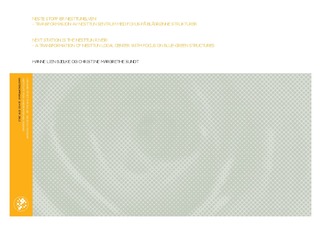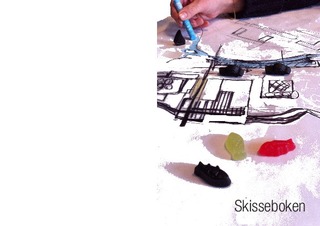| dc.description.abstract | Denne oppgavens formål er å legge til rette for gjenåpning av Nesttunelven i Nesttun sentrum. Vårt hovedfokus er å ta vare på de eksiterende grønnstrukturene, samt skape flere nye grøntområder i tilknytning til Nesttunvassdraget. Nesttun er bydelssenter i Fana bydel, og bybanens foreløpige endestopp. Nesttun har en lang historie som knutepunkt og stasjonby, både Vossabanen og Osbanen stanset tidligere her. På 1970-tallet ble Nesttunelven lagt i kanal gjennom sentrum, og elven renner i dag under kjøpesenteret og parkeringshuset på Nesttun. Sentrum bærer preg av industri og parkering, og det er få tilrettelagte grøntområder i nærheten av sentrum. Det foreligger fortettingsplaner for området, planer som inkluderer ca. 350 nye boliger og utvidelse av kjøpesenteret på 11000m2. I kommunens planer er det ingen virkelig satsing på Nesttunelven eller Nesttunvassdraget og tilhørende grøntområder. Oppgaven er et innspill til en mer stedspesifikk fortettingsplanlegging. Vi er positive til utvikling og vekst for Nesttun, men vi synes ikke at dette skal gå på bekostning av landskapet og menneskers tilgang til friområder. Vår holdning er at fortetting og grønnstruktur ikke nødvendigvis er motsetninger, men at de to kan inngå i et kompromiss. For å kunne oppnå en levende elv gjennom Nesttun sentrum må deler av sentrum transformeres. Det vil si at bygg som ødelegger for elvens naturlige løp må fjernes, og byggets funksjon må flyttes. Ved å åpne elven kan det igjen bli liv i Nesttun sentrum. En gjenåpning av elven vil ikke bare bli fantastisk for oss mennesker, det kan også bringe naturen tilbake til Nesttun. En åpen elv vil dessuten være en robust løsning ved flom. I vår design av nye Nesttun sentrum har vi lagt vekt på å tilrettelegge for fotgjengere, og å øke tilgjengeligheten og nærheten til vassdraget. Oppgaven består av seks deler: innledning til oppgaven, stedsanalyse, diskusjon av Bergen kommunes planer for Nesttunområdet, referanseprosjekter, egne strategier for Nesttunområdet, samt strategi og design for nye Nesttun sentrum. The purpose of this thesis is to facilitate the reopening of the Nesttun river in Nesttun center. Our main focus is to preserve the current green structures along with creating more green areas connected to Nesttun’s waterway.
Nesttun is the town center of Fana district, and is Bergen light-rail’s end station. Nesttun has a long history as a hub and a railway town, regional railways used to stop here. In the 1970s Nesttun river was placed in a channel through the center. Today the river flows under the shopping center and the parking garage in Nesttun. The center shows signs of industry and parking and there are few adapted green areas close to the center. There are density plans for the area, plans that include approximately 350 new homes and an expansion of the shopping center of about 11000m2. In the plans of Bergen concil there is no real commitment to the Nesttun river or Nesttun’s waterway and associated green areas. This thesis is a contribution to a more site-specific densification planning. We are positive about the developing and growth of Nesttun. However, we do not believe this should be at the expense of the landscape and people’s access to recreational areas. Our approach is that density and green structure are not necessarily opposites but that the two can be part of a compromise. In order to accomplish a vibrant river through Nesttun center, parts of the society must be transformed. This implies removing buildings that ruin the river’s natural course, and the buildings’ function must be moved. By opening the river, it may again be life in Nesttun center. A reopening of the river will not merely be fantastic for us humans but may also bring the nature back to Nesttun. In addition, an open river will be a solid solution in case of flooding. In our designs for Nesttun center we have focused on facilitate pedestrians, and to increase the availability and proximity to the waterway. The thesis consists of six parts: introduction, site analysis, a discussion of Bergen council’s plans for the area of Nesttun, reference projects, own strategies for the area of Nesttun, and strategies and designs for a new Nesttun center. | no_NO |

